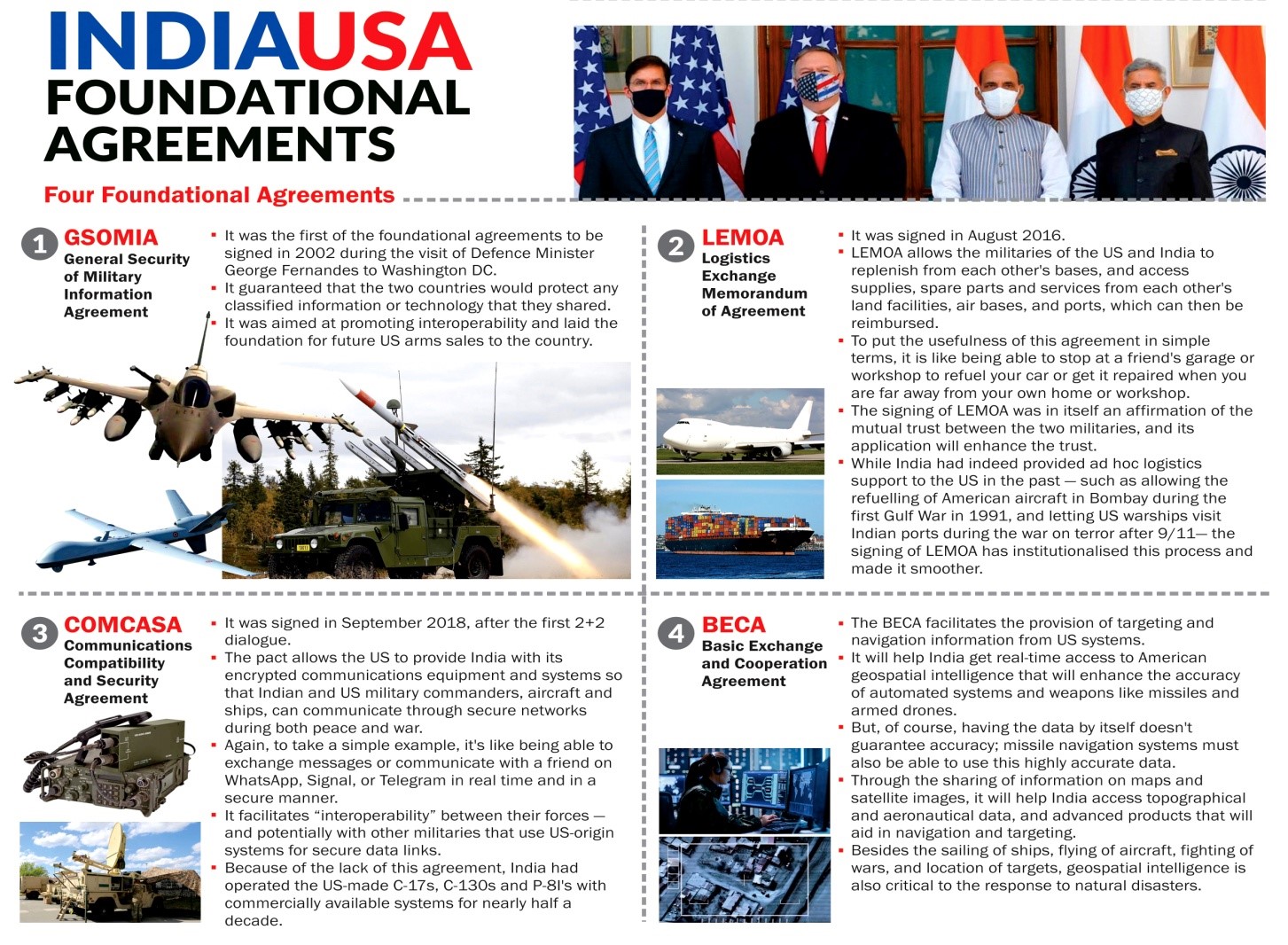The Evolving India – USA relation
Syllabus :
GS 2 :
- India’s Bilateral and multilateral relations and its significance
- Developments involving India and affecting India’s relation.
Focus:
India-US relations are in focus due to Prime Minister Narendra Modi’s recent visit to the United States. This visit seeks to strengthen bilateral ties, discuss economic cooperation, counter China’s influence, and enhance strategic defense collaboration.
India-US Relations Overview:
- Global Partnership: India-US relations are now a global strategic partnership, based on democratic values and common interests in bilateral, regional, and global issues.
- Historical Ambivalence: The US valued Indian stability but worked to neutralize India’s regional dominance, especially concerning Pakistan, reflecting ambivalence in its approach.
- Development Focus: The new Indian government’s emphasis on development and governance has provided opportunities to rejuvenate ties under the “Chalein Saath Saath” motto.
- Political Exchanges: Regular high-level political visits have given sustained momentum to cooperation, fostering a wide-ranging dialogue across multiple sectors.
- Multi-sectoral Relations: Today, India-US relations span trade, defense, security, education, science, technology, and more, reflecting the breadth of this strategic partnership.
India-US Relations: High-Level Dialogue Mechanisms
- 2+2 Dialogue: The 2+2 Ministerial Dialogue, led by foreign and defense ministers, is the highest institutional mechanism for addressing security and strategic issues.
- Economic Dialogue: The India-US Economic and Financial Partnership is led by India’s Finance Minister and the US Secretary of Treasury, emphasizing economic collaboration.
- Trade Forum: The India-US Trade Policy Forum, last held in 2017, focuses on resolving trade issues and enhancing bilateral commerce.
- Energy Partnership: The Strategic Energy Partnership addresses energy security and collaboration, crucial for both nations’ growing energy needs and climate goals.
- Homeland Security Dialogue: This mechanism, aimed at cooperation on domestic security and counterterrorism, reflects the growing convergence on global security concerns.
Changing Global Landscape
- Rise of China: China’s rapid economic, technological, and military growth challenges traditional US dominance, reshaping global power dynamics and alliances.
- Shifting Alliances: As Russia and China strengthen ties, the US seeks to bolster relations with India, aligning strategic interests to counterbalance global shifts.
- Multilateralism Strain: Global institutions are under pressure as countries prioritize national interests, leading to skepticism, particularly in agreements like the Paris Accord.
- Regional Rivalries: Power struggles in regions like the Middle East and the South China Sea create geopolitical tensions, complicating global diplomatic relations.
- Technological Competition: Emerging technologies, such as AI and cybersecurity, are key arenas for competition, with nations vying for leadership in these sectors.
Significance of PM Narendra Modi’s Visit to US:
- Strengthening Ties: The visit aims to deepen bilateral ties, addressing mutual interests in trade, security, and regional stability, enhancing long-term strategic cooperation.
- High-Level Engagement: Meetings with President Biden provide opportunities to set the agenda for future collaboration and strengthen personal ties between the two leaders.
- Geopolitical Context: Amid rising global tensions, the visit allows both nations to assess and align strategies for managing the evolving geopolitical landscape.
- Countering China: The visit is critical for discussions on counterbalancing China’s growing influence, particularly in the Indo-Pacific, where strategic interests overlap.
- Economic Cooperation: Economic dialogues will focus on trade, technology, and investment, aimed at fostering mutual economic growth and addressing shared challenges.
India’s Importance to USA:
- Strategic Location: India’s presence in the Indo-Pacific is vital for the US to maintain stability in the region and counter China’s rising influence.
- Economic Opportunities: India’s rapidly growing economy offers significant investment and trade opportunities for American businesses, fostering mutual economic benefits.
- Security Collaboration: Defense partnerships and intelligence sharing enhance global security, with India playing a crucial role in counterterrorism and defense cooperation.
- Shared Democratic Values: As the world’s largest democracy, India’s values align with the US, reinforcing democratic principles and strengthening global democratic coalitions.
- Regional Stability: India’s role in South Asia promotes regional stability, aligning with US interests in maintaining peace and promoting economic development.
Potential Challenges in India-US Relations:
- Trade Disputes: Market access, tariffs, and intellectual property rights issues could strain relations, hindering trade growth and economic collaboration.
- Geopolitical Divergences: India’s relationships with Russia and Iran could pose challenges in aligning its foreign policy with US strategic interests.
- Foreign Policy Differences: India’s non-aligned approach may occasionally diverge from the US’s alliance-based strategies, particularly in areas like the Middle East.
- Climate Change Priorities: Differences in approaches to climate change, particularly regarding developmental goals, could create challenges in environmental cooperation.
- Visa Policies: Immigration policies, particularly concerning H-1B visas, could impact professional and educational exchanges, affecting people-to-people ties between the nations.
Way Forward
- Enhance Economic Ties: Strengthen trade relations by resolving outstanding trade barriers and promoting technology transfers to unlock new economic opportunities for both nations.
- Bolster Defence Cooperation: Expand joint military exercises, intelligence sharing, and defence technology collaboration to enhance security in the Indo-Pacific region.
- Leverage Technological Collaboration: Foster partnerships in emerging technologies like artificial intelligence, cybersecurity, and space exploration to driveinnovation and economic growth.
- Align Climate Strategies: Harmonize climate change initiatives, with a focus on sustainable development and technology sharing, to address global environmental challenges effectively.
- Strengthen Multilateralism: Work together to reform and strengthen multilateral institutions, ensuring they are fit for addressing 21st-century global challenges.
- Engage the Indian Diaspora: Enhance people-to-people ties through cultural, educational, and professional exchanges, leveraging the Indian diaspora’s role in strengthening bilateral relations.
Conclusion:
The evolving India-US relationship reflects growing convergence in economic, defence, and strategic interests. Addressing challenges and leveraging opportunities will ensure that both countries can jointly navigate the complex global landscape and drive mutual growth.
Mains Practice Question:
Discuss the changing dynamics of India-US relations in the context of the evolving global order. Highlight the significance of economic, defense, and strategic partnerships in shaping the future of this bilateral relationship. (250 words)




